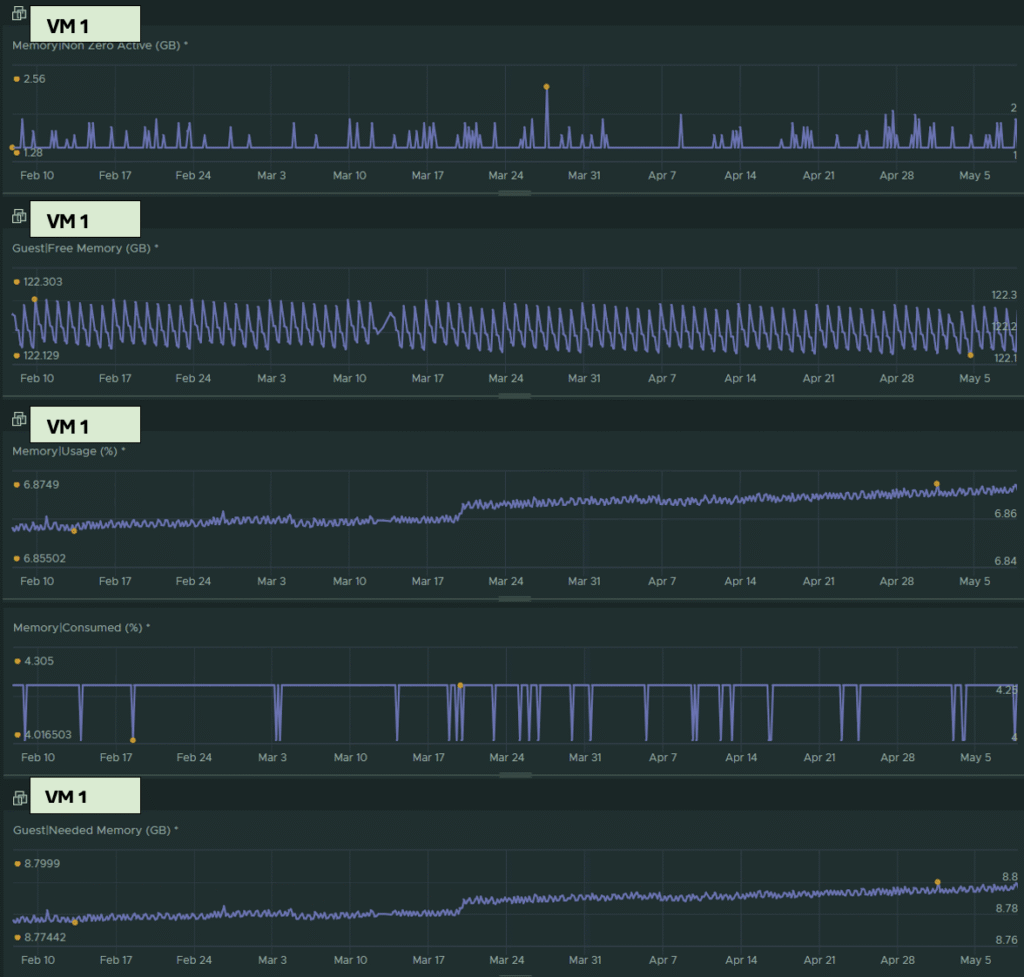This blog attempts to showcase a use case for Memory tiering which is a new feature in vSphere 8.0 U3. we will look at how we can leverage VCF Operations to analyze the key metrics for Virtual Machines for memory. The idea is to analyze the environment for workloads/ clusters where your application VMs are allocated with more than the required memory resources and how you can leverage memory tiering for efficient Vm operations by offloading non active memory pages to secondary Flash NVME devices
What is Memory Tiering in vSphere 8.0 U3
Memory Tiering utilizes more affordable devices to function as memory. In vSphere 8.0 Update 3, it uses PCIe-based Flash NVMe devices to serve as a secondary layer of memory, which enhances the memory availability on the ESXi host. By utilizing memory tiering over NVMe, performance is optimized through directed VM memory allocations to either NVMe devices or the faster dynamic random-access memory (DRAM) in the host. This approach allows for an expanded memory footprint and increased workload capacity while minimizing the total cost of ownership (TCO). for more details refer to this blog article by Dave – https://blogs.vmware.com/cloud-foundation/2024/07/18/vsphere-memory-tiering-tech-preview-in-vsphere-8-0u3/
VM Memory – Key Metrics
Lets look at some key metrics for Virtual machine which can help identify the potential candidate VMs which can take advantage of memory tiering.
Active – In generic sense this is the active memory used by the guest OS for read/write operations. But this does not represent the memory usage, its the metric to understand how much memory was active during a specific time interval. so its needs to be looked at in context with other metrics.
Guest Needed – The amount of memory needed by guest OS
Consumed – VMkernel + VM Granted, consumed memory can be very high in most cases as the guest OS does not release the free memory although it frees up the page hence active can be very low but consumed will still be very high.
Usage – The usage is mapped to the needed memory which makes more sense as the active could be much lower but its important to factor the actual demand from the guest OS so we don’t over optimize the resource allocations.
Now lets look at an exampple where all of these metrics together showing a trend for a virtual machine with respect to memory consumption. The metrics analysed together indicate that the VM does not really need most of the memory it has been allocated. The Guest OS needed is much lower and also the consumption overall shows a steady pattern. so carefully checking the behavior over a period of time can suggest that this VM could be good candidate for the memory tiering.


VCF operations can help you analyse such VM candidates pretty easy and in quick fashion so the underlying ESXi host can benefit from the memory tiering feature. The ESXi Host would be able to efficiently manage more VM workloads within the same capacity thus increasing the VM density on the host and eventually at the cluster level.
Hope you enjoyed reading this blog!



